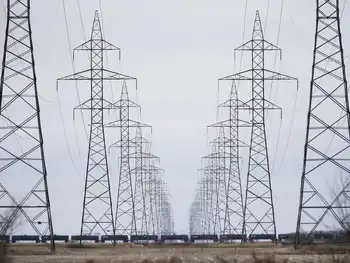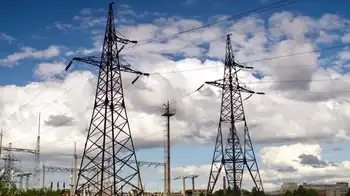GM’s Volt “ahead of schedule”
By Toronto Star
NFPA 70b Training - Electrical Maintenance
Our customized live online or in‑person group training can be delivered to your staff at your location.

- Live Online
- 12 hours Instructor-led
- Group Training Available
The 76-year-old vice-chairman and head of global product development at General Motors is also convinced the auto giant will lead the world toward this low-emission future.
Lutz joined GM chairman and chief executive Richard Wagoner in Detroit to unveil the production version of the company’s highly anticipated Volt, a plug-in hybrid car that analysts say could save – or further sink – the struggling U.S. automaker.
GM says the Volt, equipped with a powerful 16-kilowatt lithium-ion battery pack, will be able to drive 65 kilometres on a single electric charge. Beyond that, a range-extending generator that runs on gasoline kicks in, adding hundreds of kilometers to the vehicleÂ’s range. The company believes 80 per cent of North Americans drive less than 65 kilometre each day, making the Volt an attractive option against a backdrop of skyrocketing fuel prices.
About 50 pre-production Volt cars will be produced this year, and more than a 100 next year. By fall 2010, when GM expects to commercially launch the Volt, several hundred of the cars will have been road-tested in all seasons, all conditions. GM is betting the Volt can help it leapfrog Toyota and its successful Prius.
Lutz, who flew into Toronto following the Detroit launch, said everything so far is going as planned. Despite skepticism expressed by its Japanese rivals, he added, the lithium-ion technology at the heart of the Volt is meeting all expectations. “We’re actually way ahead of schedule with everything now because we haven’t encountered any problems,” said Lutz, a seasoned auto executive known for speaking his mind.
The Star attended a dinner with Lutz that evening.
HereÂ’s how he responded to some questions posed from the table:
Q: The initial cost of the Volt has been reported in the range of $30,000 (US) to $40,000. Is GM comfortable with that price point?
A: ItÂ’s clear the thing is going to cost many thousand dollars more than we had hoped for the first generation technology. So what do we do about that?
Initially there will be enough demand from rich people, so there wonÂ’t be a worry for the first year or two. But if we want to generalize the technology the price has to come down.
Q: ItÂ’s frequently reported that GM is betting the farm on the success of the Volt. Would you characterize it that way?
A: Yes and No. If it doesnÂ’t work itÂ’s not fatal. But, if it doesnÂ’t work it would also be a severe blow to our imageÂ…. Instead of building our image for technological leadership it would tend to erode it, because people would say they hyped the hell out of it and at the end of the day it didnÂ’t work. That would be a terrible thing. I donÂ’t think it would destroy the company, but it would be a major setback. But if it goes well, which IÂ’m 99.9 per cent sure it will, itÂ’s going to have exactly the opposite effect. It will have a transformational effect on General MotorsÂ’ reputation for technological leadership and environmental awareness.
Q: What challenges — beyond price, performance and range — do plug-in vehicles have to overcome before gaining mainstream acceptance?
A: WeÂ’re really trying to get a handle on the problem of people who donÂ’t have houses and donÂ’t have garages, like apartment dwellers, condo dwellers, people who park in the street. Right now thereÂ’s no (charging) solution for them. A partial solution would be to encourage parking deck owner to put in one floor or half a floor that would be reserved for electric vehicles, where there would be metered parking spaces where you can plug in and swipe your credit card.
Q: What about electricity theft? People hi-jacking your outlet so they can charge up on your dime?
A: The way the parking meter is going to work is itÂ’s going to have a slot, you put your plug in, and the slot will go over the cord and lock when you swipe your credit card, so that nobody can pull your plug out and put theirs in. When you re-swipe it will snap open again and you can withdraw your plug.
Q: The Volt on its own is a sexy proposition, but what else is GM considering in terms of bells and whistles?
A: Next year we will have a photovoltaic roof (to be introduced at the Detroit auto show). It canÂ’t contribute a lot, because the state of photovoltaics is not at that point. But hereÂ’s what it can do: If you leave your car, say, take it to the airport and the car sits in the airport for a few days in the blazing hot sun, you could get a quarter to a third of a charge off thatÂ… And what it can do on a daily basis, when left in the sun in the summer it can power the air conditioning system, so when you get in the car itÂ’s already cooled down, which will save you driving range, because now you wonÂ’t have to draw as much energy to cool the car down. And in the winter, we could reasonably do the reverse, which is use the solar energy for heating the car.
Q: WhatÂ’s next for GM beyond the Volt in terms of plug-in electric technology?
A: There are no plans to do other vehicles yet. I get excited already, and am already thinking about various other ways to use the Volt technology, and (GM chairman and CEO) Rick Wagoner always gets annoyed at me and says 'Bob, could we just concentrate on bringing the Volt to market please?Â’... The point is the technology is transportable. We can also change the balance of range with performance. So if we wanted to do a different brand and wanted more performance, we could tweak it to more performance and sacrifice range a little bit.
Q: Are electric utilities on board with the introduction of plug-in cars like the Volt?
A: The utilities today have a problem. During the day the demand is almost more than they can handle, and at night they have spare capacity and they canÂ’t turn the generators on. Anything that fills up that spare capacity at night, which would be electric vehicles like the Volt, and has the potential of storing it and reselling some of it the next day when itÂ’s needed, utilities would be very happy with that.
Q: Canada gets cold winters. How well will the car – the battery – perform when the thermometer drops below zero?
A: The computer will know how cold it is outside. If the computer determines itÂ’s too cold for the battery to function, the car will simply start on the gasoline engine. It will run on the gasoline engine until the battery is prepped, at which point the gasoline engine conks out and youÂ’re on battery again. Which is what the pure electric vehicle is not going to do.
Q: Assuming the Volt delivers on expectations and is well-received by consumers, what else could derail GMÂ’s efforts?
A: Let us say that over the next 18 months the world goes into a major recession, car sales and fuel use drop dramatically, the steel companies produce less steel and therefore use less energy, China finds its main export markets drying up, so they are into a contraction and use less steel and aluminum and plastic. And at the same time Canadian tars sands come on stream, and coal-to-liquids come on stream. All of a sudden there is a reduction in primary demand in petroleum plus all these additional new supply sources, which were started at the time of $140 a barrel, suddenly coming on stream. And oil drops to $25 a barrel and weÂ’re looking at gas pump prices at $1.25 a gallon. I personally donÂ’t think thatÂ’s going to happen, but that would be a dramatic event for the Volt because everybody would say, 'Ha! Why should I bother?Â’











